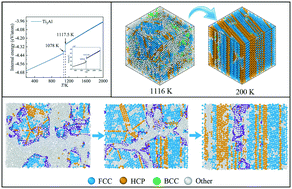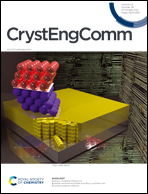New phase transition pattern of fivefold twins transformed into lamellar structure in Ti3Al alloy
Abstract
Fivefold twin (FFT) and lamellar (LAM) structures are the primary configurations during the crystallization of alloys. However, the co-existence of these two structures in one system and the conversion mechanism are barely explored. In this study, we investigated the rapid solidification process of a Ti3Al alloy by using molecular dynamics simulation and discussed the evolution of the microstructure under two first-order phase transitions in detail. The first phase transition followed Ostwald's step rule, and the nucleation pathway in the system was supercooled liquid → BCC → FCC/HCP. A new phase transition pattern of FFTs transformed into a LAM structure leading to a second phase transition was found. The FFT atoms first transformed into other atoms as the partition interface, and then the LAM structure consumed Other atoms and grew further. The interconversions between different clusters were unstable and required complex intermediate states to reach stability. These findings provide a new understanding of the relationship between the FFT and LAM structures, especially for the metal that underwent two-phase transitions.

- This article is part of the themed collection: Crystal Growth


 Please wait while we load your content...
Please wait while we load your content...